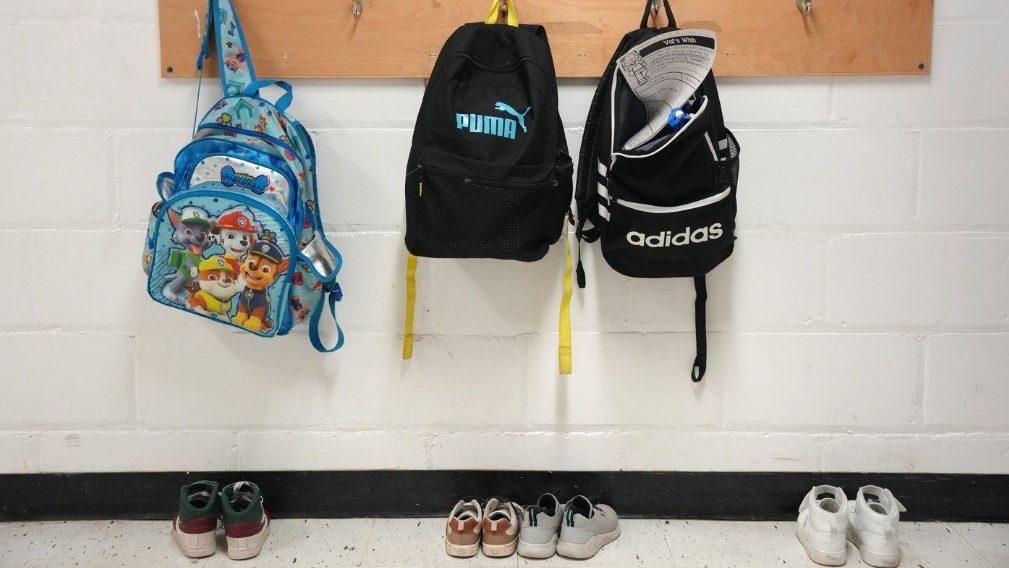‘Inescapable’: students, teachers seek relief from hot classrooms

Posted Jun 20, 2024 05:10:11 AM.
Last Updated Jun 20, 2024 04:26:02 PM.
In Beatrice Schneider’s seventh-grade classroom in Toronto, there are two fans in opposite corners of the room. One of them is broken.
When temperatures soar – as they have this week while much of Ontario experiences a heat wave – the class gets stuffy, the students get sweaty, and learning can be difficult.
“It’s so hot,” said Beatrice, who is 12. “There’s barely any breeze through the windows. It’s not enough.”
Beatrice is a student at Humbercrest Public School, one of hundreds of schools in the Toronto District School Board (TDSB) without air-conditioned classrooms.
As climate change worsens extreme weather conditions, the lack of air conditioning in many classes has become a heated issue amongst concerned students, parents and teachers, who say school boards and governments need to address the problem.
For Beatrice, the last few days—when Environment Canada has warned of temperatures reaching up to 35 C—have been “a drag.”
“We go outside mostly for gym, play a game, kick a ball around. And then we come back inside, and there’s nowhere to cool off. It’s just inescapable,” she said.
“It makes it hard to learn, to focus, it makes you tired … I come home, I’m sweaty.”
Locally, the Waterloo Region District School Board said in a statement that 75 per cent of its schools have air conditioned spaces.
“All WRDSB elementary and secondary schools have a form of mechanical cooling. Approximately 75 per cent of the overall spaces in WRDSB schools are air-conditioned. This total excludes spaces such as gyms, corridors, washrooms, change rooms and utility spaces, which are not air-conditioned. We continue to add air conditioning, when appropriate and budget permitting, to all renovated and upgraded teaching spaces and similar including projects now underway or slated for summer construction.”
WRDSB added that the safety and well-being of students, staff in WRDSB schools is paramount.
“In anticipation of the heat wave forecasted to affect much of North America this coming week, we are taking proactive measures to ensure students and staff safety and well-being. Our schools are prepared to implement our Administrative Procedure on Extreme Temperatures and Outdoor Activities During Extreme Temperatures, which outline specific actions to mitigate the impact of high temperatures.”
Adrian Frigula with the Waterloo Catholic District School Board is the senior manager of facility services and said about 98 per cent of classrooms within the Catholic board have air conditioning.
“There is no schools that don’t have air conditioning,” said Frigula. “we have it in every single school but there are either units down so those schools get a temporary accommodation.”
Any classroom that doesn’t have air conditioning will get temporary units that are brought in.
“We setup floor units, two of those to a classroom and we ensure there is enough power supply to run those and give them temporary support,” he said.
Ontario spokesperson says government has spent millions to improve ventillation
A spokesperson for Education Minister Todd Smith said the provincial government has invested millions to improve ventilation in schools, but the responsibility of managing school heat protocols falls to the school boards.
“While the ministry provides funding, it is the responsibility of the school board to have protocols in place as to how they deal with heat in schools, as well as addressing school renewal needs and requirements,” Isha Chaudhuri wrote in a statement.
NDP education critic Chandra Pasma called the provincial government’s deferral to school boards “shameful” and urged the education minister to take action.
“We know that this government could address this problem today through dedicated funds to improve school infrastructure and investing in air quality and regulation,” Pasma wrote in a statement.
Kitchener-Centre MPP Aislinn Clancy also calling on the government to come up with a “heat preparedness plan.”
“It’s well past time for Ontario to have a heat preparedness plan. We need a plan to protect kids from the 30 to 40 degree temperatures forecasted for this week. Not only is learning in that heat next to impossible, it’s dangerous for vulnerable kids and staff,” said Clancy on social media.
For Beatrice, it all comes down to what’s being done to address the issue right now, which she says is not much.
“They’re not doing anything to fix the temperature of the classrooms or to bring in proper air conditioning to the room,” she said. “This is a really big problem.”
With files from The Canadian Press








